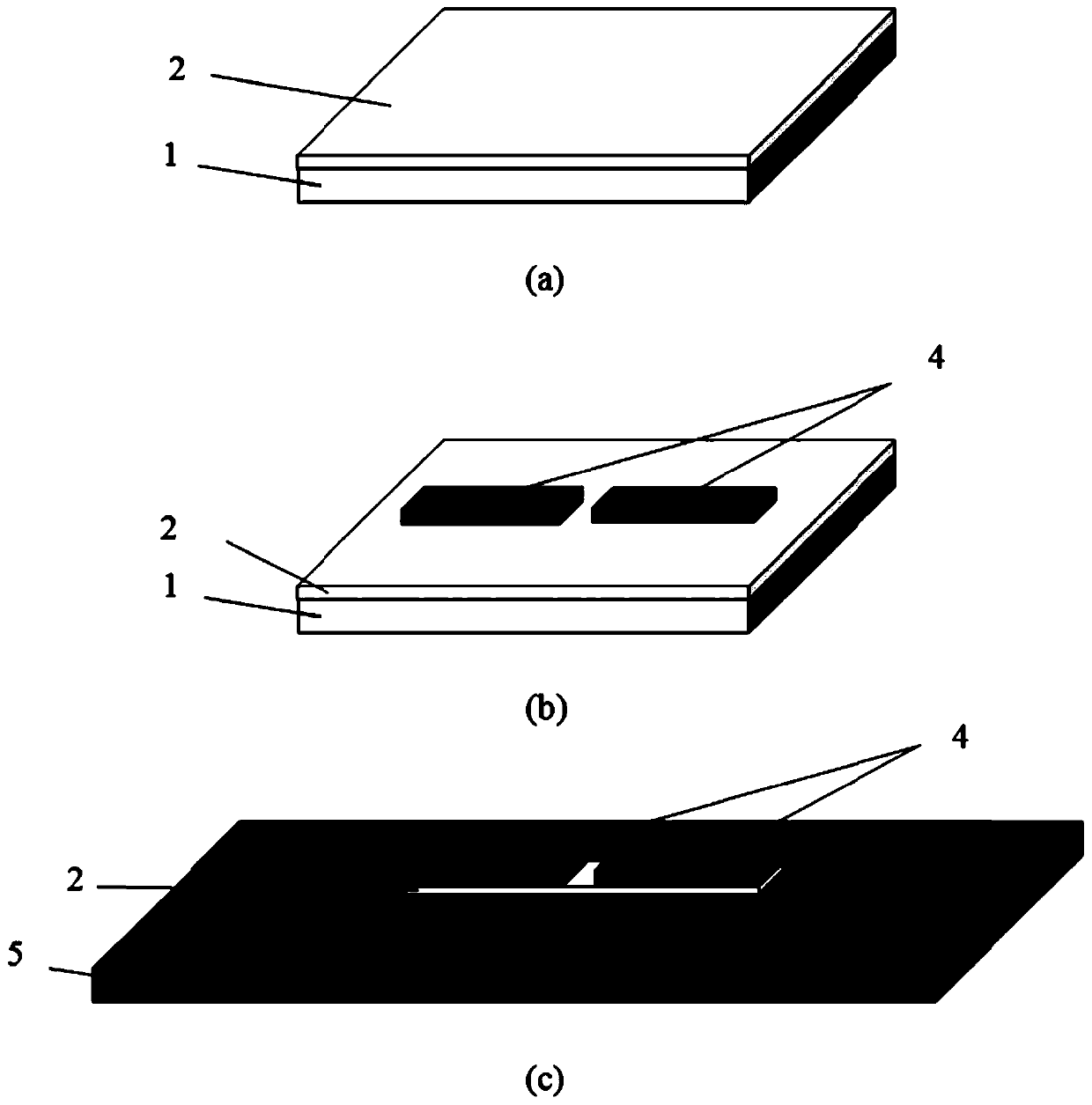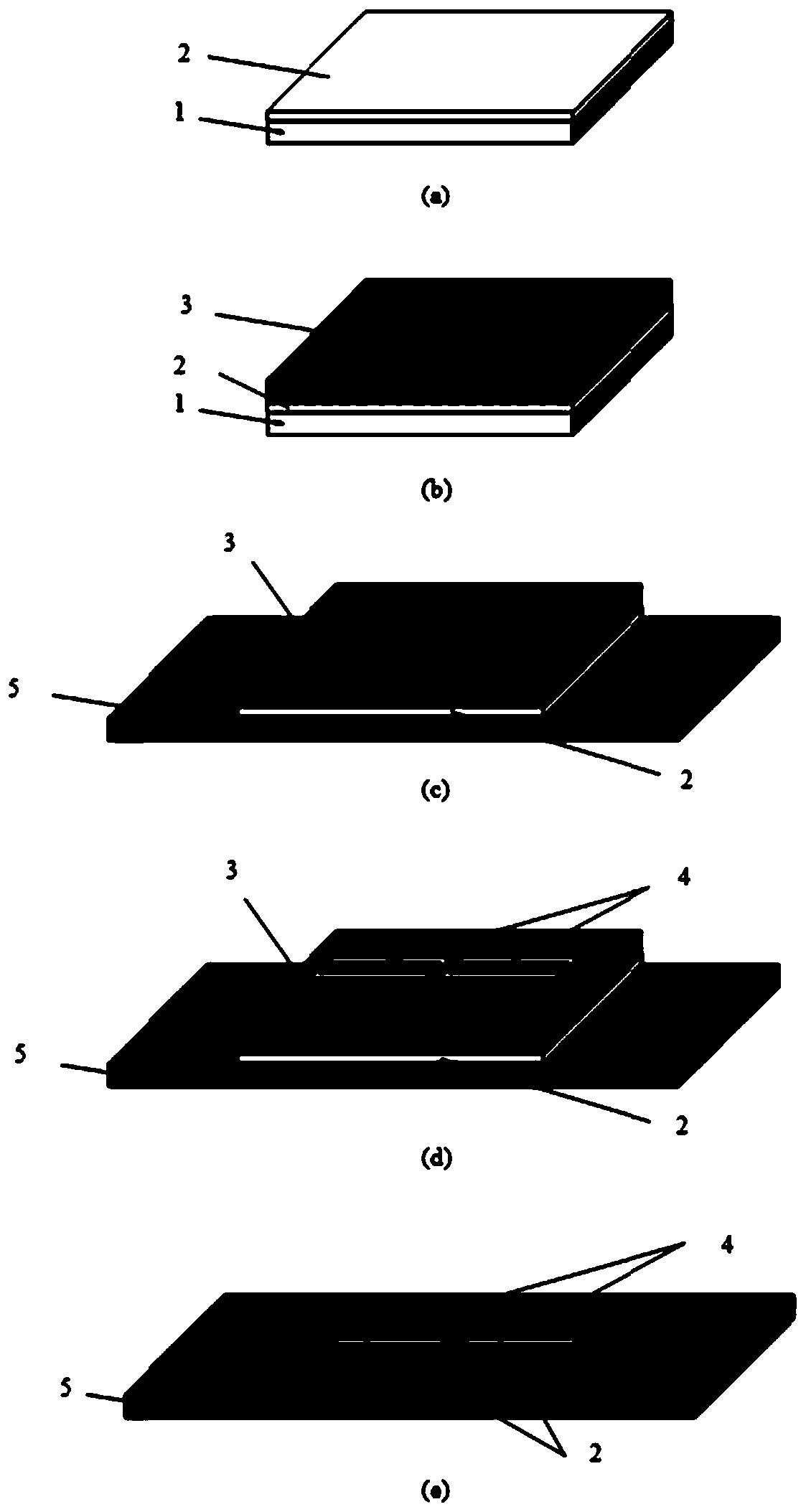Graphene antenna and preparation method and application thereof
A graphene and antenna technology, applied in antennas, resonant antennas, antenna components, etc., can solve the problems of inability to conform to three-dimensional objects, graphene antennas can only be printed on flat substrates, etc., and achieve the effect of expanding applications
- Summary
- Abstract
- Description
- Claims
- Application Information
AI Technical Summary
Problems solved by technology
Method used
Image
Examples
Embodiment 1
[0042] The pattern of the graphene antenna is a graphene printing layer, and the graphene printing layer is transferred to the target substrate together with the water transfer film. The specific steps include:
[0043] Step 01: Print the graphene conductive ink on the water transfer paper by screen printing to form a graphene printing layer. The printing speed is 5-100 mm / s. The graphene printing layer is in the shape of the designed antenna ;
[0044] Step 02: Use thermal curing to dry and cure the graphene printing layer, the curing temperature is 50-120°C, and the time is 10-120 minutes;
[0045] Step 03: Soak the structure obtained in step 02 in deionized water for 1 to 60 minutes, so that the graphene printing layer is detached from the water transfer paper substrate, and transferred to the target substrate, and then dried naturally.
[0046] In this embodiment, the printing technology of screen printing is adopted to prepare the graphene printing layer, but it is not l...
Embodiment 2
[0052] The pattern of the graphene antenna is formed by micro-nano processing of the graphene printing layer by micro-nano processing technology, and the patterned graphene printing layer is transferred to the substrate together with the water transfer film, which specifically includes the following steps:
[0053] Step 01: Print the graphene conductive ink on the water transfer paper by scraping to form a graphene printing layer, and the printing speed is 5-100 mm / s;
[0054] Step 02: Dry and solidify the graphene printing layer by thermal curing, the curing temperature is 50-120 degrees Celsius, and the curing time is 10-120 minutes;
[0055] Step 03: Use laser engraving technology to pattern the graphene printing layer, and etch out the designed antenna pattern;
[0056] Step 04: Soak the structure obtained in step 03 in deionized water for 1 to 60 minutes, so that the graphene printing layer is detached from the water transfer paper substrate, and transferred to the desire...
Embodiment 3
[0063] The pattern of the graphene antenna is formed by micro-nano processing of the graphene printing layer by micro-nano processing technology. The graphene printing layer and the water transfer film are transferred to the target substrate together to pattern the antenna, including the following steps:
[0064] Step 01: Print the graphene conductive ink on the water transfer paper by scraping to form a graphene printing layer, and the printing speed is 5-100 mm / s;
[0065] Step 02: Dry and solidify the graphene printing layer by thermal curing, the curing temperature is 50-120 degrees Celsius, and the curing time is 10-120 minutes;
[0066] Step 03: Soak the structure obtained in Step 02 in deionized water for 1 to 60 minutes, so that the graphene printing layer is detached from the water transfer paper substrate, and transferred to the desired substrate, and then dried naturally;
[0067] Step 04: Use laser engraving technology to pattern the graphene printing layer transfe...
PUM
 Login to View More
Login to View More Abstract
Description
Claims
Application Information
 Login to View More
Login to View More - R&D
- Intellectual Property
- Life Sciences
- Materials
- Tech Scout
- Unparalleled Data Quality
- Higher Quality Content
- 60% Fewer Hallucinations
Browse by: Latest US Patents, China's latest patents, Technical Efficacy Thesaurus, Application Domain, Technology Topic, Popular Technical Reports.
© 2025 PatSnap. All rights reserved.Legal|Privacy policy|Modern Slavery Act Transparency Statement|Sitemap|About US| Contact US: help@patsnap.com



